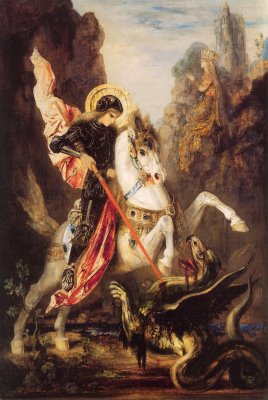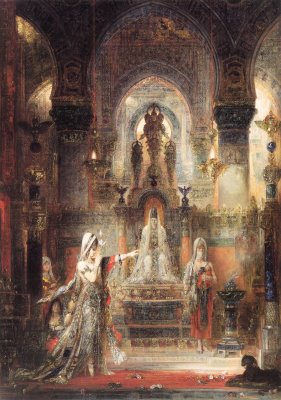 Gustave Moreau (1826-1898) was a French Symbolist painter. His work reminds me of the mesmerizing lumeniscent detail of Robert Venosa. Moreau was born in Paris and studied under Picot. He exhibited at the Salon in the 1860s, rose to prominence, and later became an instructor at the Ecole Des Beaux-Arts. Most of his works focused on Greek mythological and Biblical subject matter. Moreau is regarded as a forefather of Surrealism.
Gustave Moreau (1826-1898) was a French Symbolist painter. His work reminds me of the mesmerizing lumeniscent detail of Robert Venosa. Moreau was born in Paris and studied under Picot. He exhibited at the Salon in the 1860s, rose to prominence, and later became an instructor at the Ecole Des Beaux-Arts. Most of his works focused on Greek mythological and Biblical subject matter. Moreau is regarded as a forefather of Surrealism.
St. George (1890) at the National Gallery in London. What I like about Moreau is how he combines the dreamlike imagination of the Symbolist movement with the technical refinement of the Academic tradition.

Jupiter and Semele (1895) at the Gustave Moreau Museum in Paris. There are not words to describe the splendorous detail in this painting. I strongly suggest that you consult this high resolution image.
Semele was a lover of Zeus and mother of Dionysius. Decieved by the jealous Hera, she demanded that Zeus reveal his true nature. Zeus did so, and she perished in the full sight of his godhood.

Salome Dancing Before Herod (1876) at the Armand Hammer Museum of Art in Los Angeles. Moreau was a master of lumeniscence.

No comments:
Post a Comment